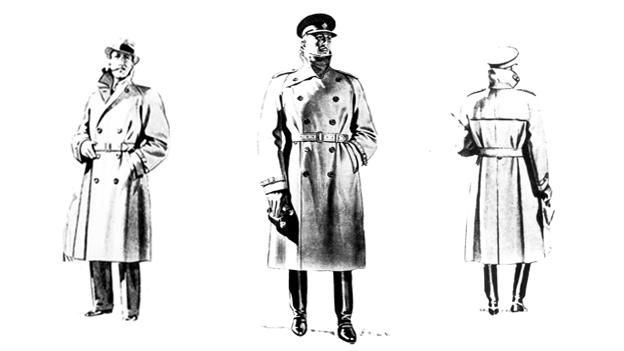Listed status for Dewsbury buildings that 'kept British Army warm'
- Published
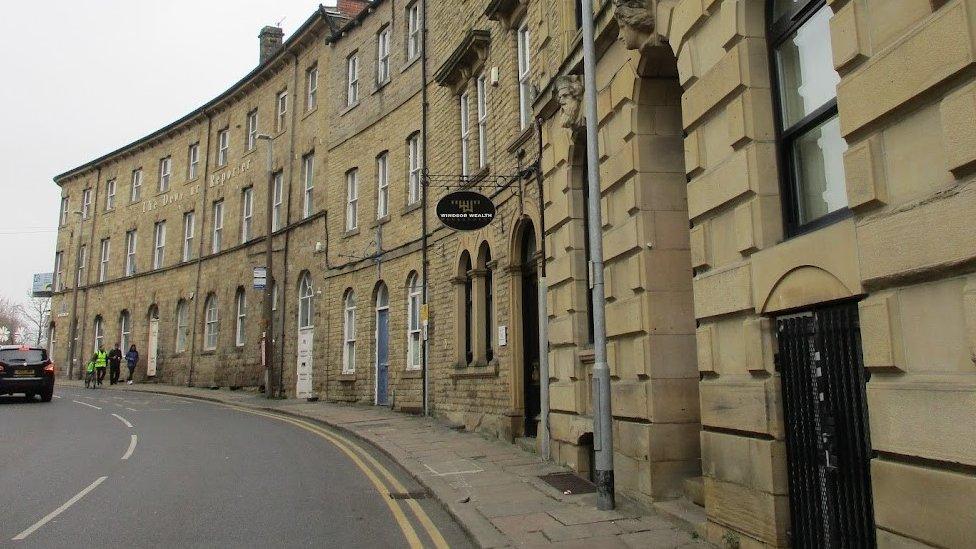
Former textile warehouses on Wellington Road, Dewsbury
Buildings used for turning rags into coats for World War One soldiers have been given listed status.
Historic England said Dewsbury, where the buildings were sited, was once the world's leading producer of recycled cloth during the Industrial Revolution.
The area made "shoddy" and "mungo" - heavy fabrics produced from rags and used for military coats and blankets.
According to Historic England, the West Yorkshire town "essentially kept the British Army warm for over a century".

Dewsbury played a key part in the manufacture of Army greatcoats, said Historic England
More than a dozen buildings - including the opulent Town Hall - have been Grade II listed by the Department for Culture, Media and Sport, on the advice of Historic England, giving the structures greater protection.
King George V visited the town in 1912, and again in 1918, to show his appreciation for military uniform production, Historic England said.
Sarah Charlesworth, Historic England's listing team leader for the north, said: "These newly-listed buildings help to tell the story of Dewsbury's contribution to the development of England's textile industry and recycling.
"In the 19th Century, it was probably the greenest town in England."
The new listings follow recent research carried out by Historic England which revealed the town's significance as an international centre for recycled cloth during the 19th Century.
At the end of the 18th Century, Dewsbury's population was only about 1,000, but by 1851 it had grown to more than 14,000, thanks to the rapid development of its textile industry.
The new listings are part of the Dewsbury Heritage Action Zone, a five-year project with Kirklees Council aimed at re-energising the town centre through the restoration and reuse of its historic buildings.

The listed buildings
The Town Hall
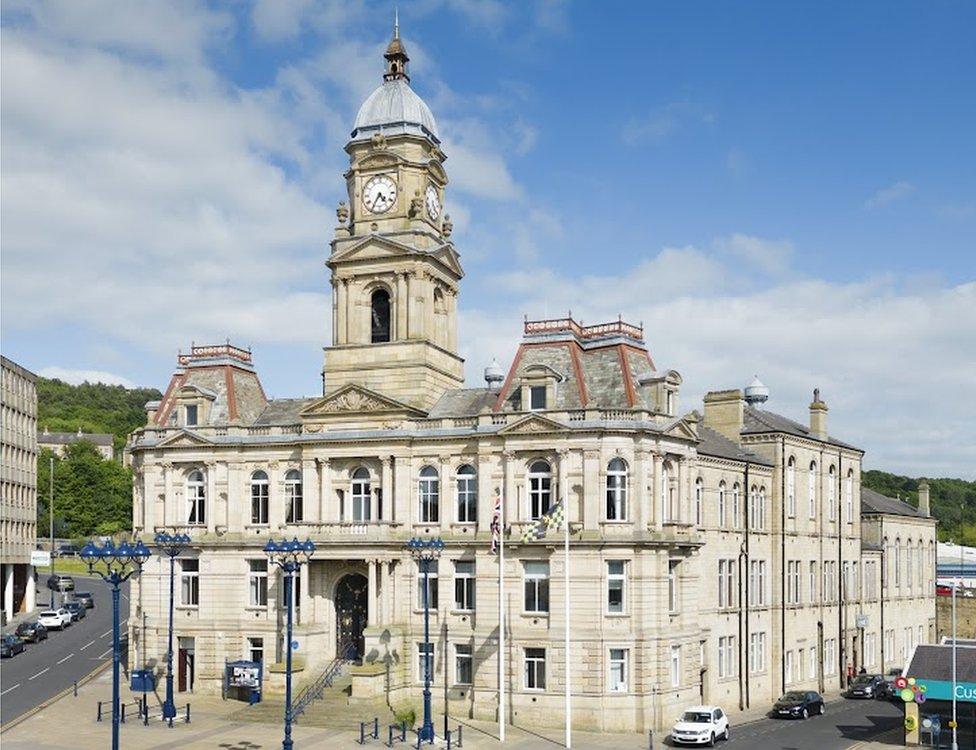
Dewsbury's Town Hall makes listed status
Built between 1886 and 1889 by well-known local architects Henry Holtom and George Arthur Fox, the Town Hall brought together a wide range of functions including municipal offices and departments, borough court, police station and event spaces.
18, 20 and 22 Bond Street
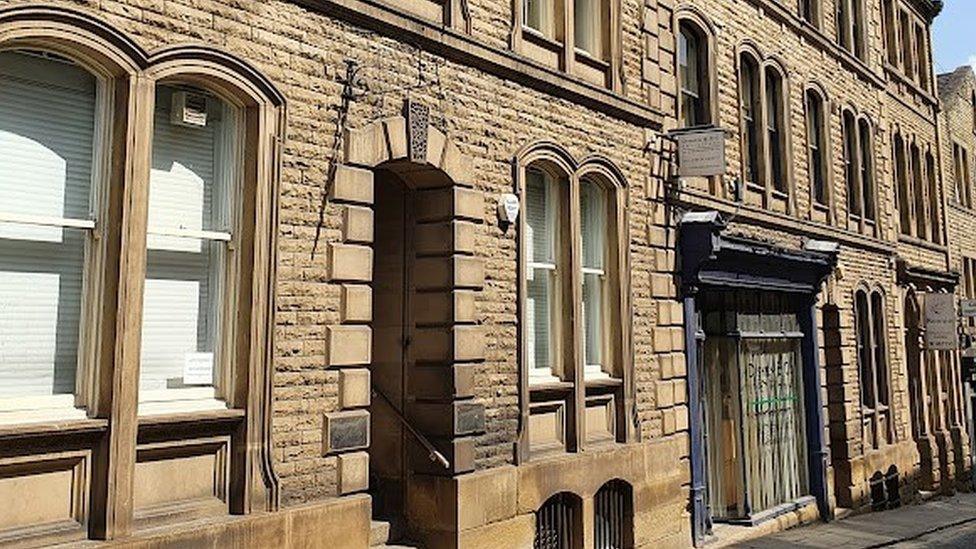
Bond Street warehouses in the modern day
These three buildings were all constructed as warehouses in Italian Renaissance style between 1862 and 1871. The building at 18 Bond Street was made for Crawshaw & Sons who sold leather goods and produced drive belts for machinery.
Buildings at 20 and 22 Bond Street were constructed for Matthew Grandidge, a wool-stapler - a dealer who buys, sorts, grades and resells wool.
Former Fox Auctioneers, 2-4 Grove Street
The building was designed by John Kirk & Sons in 1878 for William Fredrick Fox. The site was used for the storage and sale of furniture and a range of goods, including horses.
Former Dewsbury Union offices
The former headquarters for Dewsbury Union was constructed by an unknown architect in the 1890s in a Renaissance Revival style.
Many of the original features survive, including the mosaic flooring and an impressive cast iron staircase.
The site operated as a registry office for births, deaths and weddings up until 2012, when these services moved to Dewsbury Town Hall. The building has been derelict since.
41 Daisy Hill
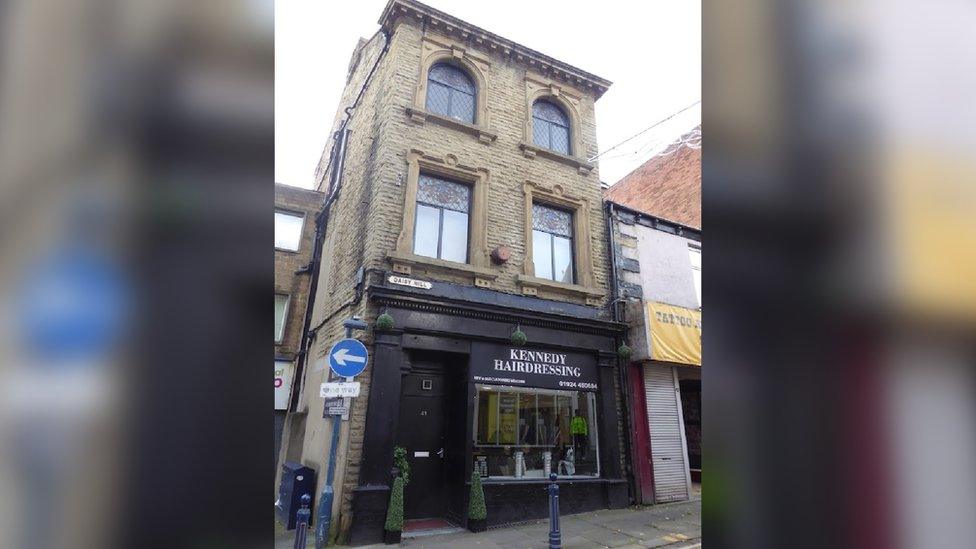
The origins of 41 Daisy Hill may be linked to a pub
The address 41 Daisy Hill was most likely built with the textile trade in mind, but its original purpose is unknown.
Potentially an early piece of work by John Kirk & Sons, this building may have been designed for William Fryer, as part of a public house - Fryer's Vaults.
Functioning as both a shop and domestic accommodation, this mid-19th century location survives well, retaining its historic shopfront. The building remains in use as a shop and residence.
1-1a and 3 Wellington Street and 17, 21, 23 and 25, 27 and 29 Wellington Road
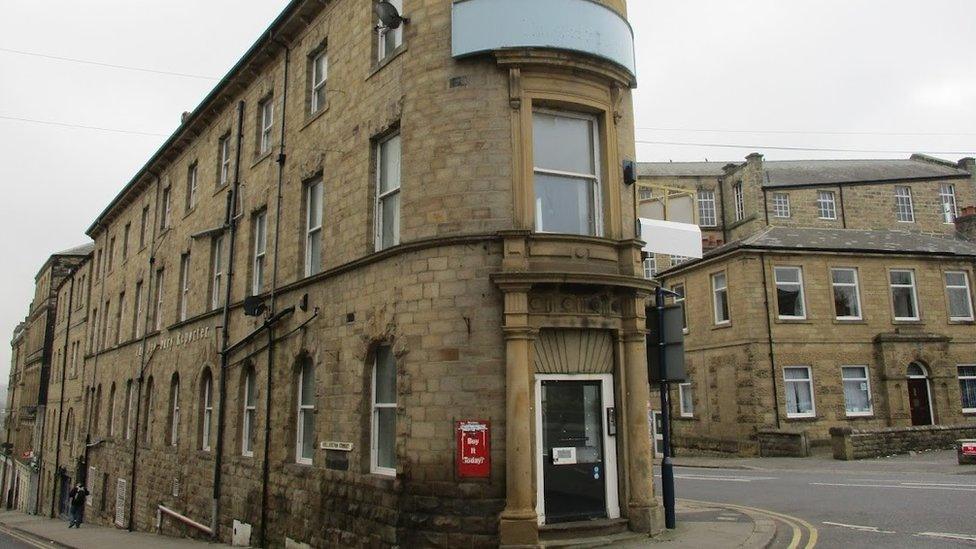
A view down Wellington Street
This collection of buildings all once operated as textile warehouses in the latter half of the 19th Century.
The urban palazzo style warehouses are an early example of warehouses incorporating retail space in the design.
They have since been converted into offices and homes.
Source: Historic England

Follow BBC Yorkshire on Facebook, external, Twitter, external and Instagram, external. Send your story ideas to yorkslincs.news@bbc.co.uk, external.
Related topics
- Published8 March 2023
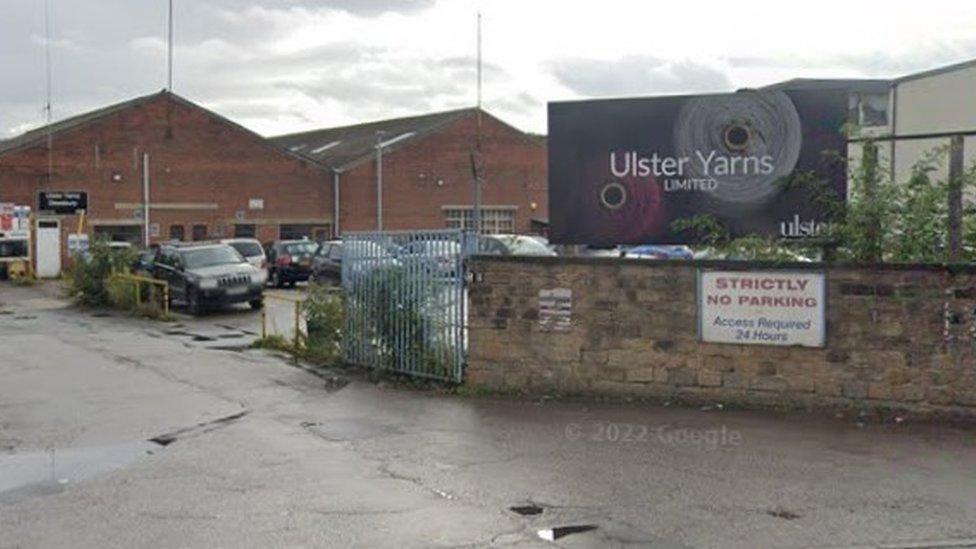
- Published5 October 2014
